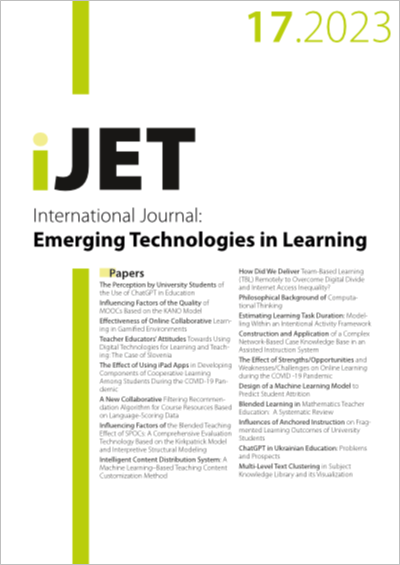The Perception by University Students of the Use of ChatGPT in Education
DOI:
https://doi.org/10.3991/ijet.v18i17.39019Keywords:
ChatGPT, benefits, barriers, perception, educationAbstract
ChatGPT, a generative language model recently created by OpenAI, has drawn a lot of criticism from people all around the world. ChatGPT illustrates both potential opportunities and challenges in education. This study aims to investigate how university students perceive using ChatGPT for learning, including benefits, barriers, and potential solutions. To determine how students felt about using ChatGPT in their learning, a questionnaire was distributed to 200 students via an online survey, and 30 students participated in semi-structured interviews. The research results showed that, in general, students had a favorable opinion of ChatGPT’s application. The benefits of ChatGPT, according to students, included saving time, providing information in various areas, providing personalized tutoring and feedback, and illuminating ideas in writing. Also, several barriers to using ChatGPT were recognized, and some solutions were suggested for improvement of using ChatGPT in education. The most concerning issues for students while using ChatGPT were inability to assess the quality and reliability of sources, inability to cite sources accurately, and inability to replace words and use idioms accurately. To address these concerns, some potential solutions can be implemented; for example, verifying ChatGPT’s responses with reliable sources; using ChatGPT as a reference source or a consultant tool; providing guidelines for use; and promoting academic integrity to ensure ethical uses of ChatGPT in an academic context.
Downloads
Published
How to Cite
Issue
Section
License
Copyright (c) 2023 Thi Thuy An Ngo

This work is licensed under a Creative Commons Attribution 4.0 International License.



